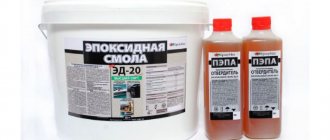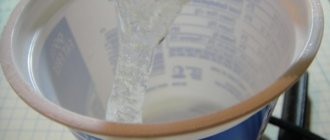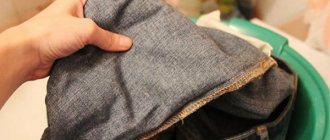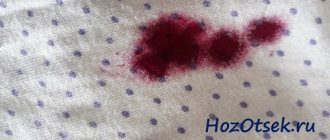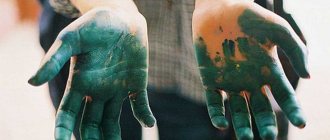Quite often, when working with construction materials, workers deal with epoxy glue. As in any work, it happens that the working material gets on the surrounding surface, as well as on the hands with which the master works. In this article we will look in detail at how and with what you can remove epoxy resin from your hands.
Removing epoxy resin from hands using Coca-Cola
In this case, Coca-Cola helps not only boil the kettle, but also remove epoxy from your hands. In fact, in addition to the famous cola, Fanta, Sprite, Pepsi and other similar drinks are suitable.
How to prepare a mixture for removing epoxy from hands:
- For 1 liter of Cola, take 1 tbsp. spoon of soda
- Shake\Stir
- Wash your hands in the solution
- The duration of washing is no longer than 10 minutes
- Rinse off with plain water
- Wash your hands again with soap and apply baby cream
Features of cleaning a child's skin and hair
Kids often get dirty while walking. They love to collect cones and branches of coniferous trees. This is how an odorous viscous liquid appears on their hands and clothes.
It is useless to wash off resin from children's skin with water: the substance will only harden faster and adhere better. Then it will be almost impossible to clean up the contamination. Water is effective only when the remaining substances are completely washed away.
You can leave everything as is. Little by little, the tar stains will disappear on their own. But such a process will take a lot of time. The resin comes off much faster after treating the baby's hands with baby cream. It is optimal to take the fattest product.
Instructions:
- Children's skin is lubricated with cream.
Baby cream is suitable for removing tar from baby's delicate skin - Remove remaining resin with a dry cloth.
Neither alcohol, nor acetone, nor white spirit can be used to remove any type of resin from a child’s skin . The substances are harmful to children's health. Only natural products are used. The best of them is vegetable oil.
Apply baby oil or any natural oil to the stain.
If the baby is very dirty in spruce resin, then you can clean the stains with citric acid or fresh lemon juice. However, it is more effective to combine the action of acid and water, using the method when washing a tomboy. This action will take a lot of time. Half an hour minimum, if the baby has had enough time to cuddle with trees during a walk and has collected enough oleoresin “in reserve.”
It is not easy to remove resin from hair. The best option is still a haircut. Alternatively, combing the locks with oil is acceptable. With the help of ice, it is possible to “freeze” the resin and remove it from the hair. But the method is painful.
It is acceptable to use ice to remove tar marks from the skin, but this method can cause a cold. You can use ice to remove tar from your hands, but not from your child’s back, belly, or legs.
Removing epoxy stains from hands using baking soda
Soda is a fairly common reagent that we often use in our households and everyday life. The main advantage of soda is that even if it comes into contact with the skin for a long time, there will be no burn. The main rule when using soda is to not let your hands and surfaces dry out.
How to prepare a mixture for removing resin using soda:
- Prepare a solution in the proportion of 1 tbsp. spoon of water
- Add to this 3 teaspoons of soda
- Make a paste from the resulting mixture
- Carefully apply the paste to the contact site and the resin itself.
- Removing epoxy resin
- Wash off the mixture with warm water
Security measures
- Protect yourself from getting chemical cleaners inside with a gauze mask.
- While performing cleansing actions, you should not drink or smoke.
- Do not use solvents with a pungent odor in a ventilated area.
- Apply strong medications only to the stain to be removed.
- To prevent the sticky mixture from spreading, clean from the edges to the center.
- After treatment, wash off the remnants of the drug used with soapy water.
Removing Epoxy from Hands Using Rubber Glue
It may be surprising for some that the glue should be removed with glue, but there is another side to the issue. The essence is not a wedge with a wedge, but in some ways there is a similar meaning. The fact is that rubber glue contains solvents, but the main thing here is not to overexpose it.
The entire removal operation should not take 10 seconds, otherwise you will also have to remove rubber glue from your hands later.
IMPORTANT! Remember that these chemicals should not be used on children, as there is a risk of allergic reactions and burns.
What to do with rubber glue
- Apply glue to the skin area
- Keep the glue on contact for no longer than 10 seconds
- Gently roll the glue and resin from the contaminated area with your fingers.
- Wash your hands with soap and apply baby cream
How to remove epoxy from leather
To begin with, it must be said once again that when working with epoxy resin, the master must wear disposable gloves so that the resin does not get on his hands, but sometimes unforeseen cases happen.
If epoxy gets on the skin of your hands, you should try to remove it before it hardens. Regular wet wipes will do the job. If the polymer on the skin has already hardened, then you need to moisten paper napkins or a towel with a 3% vinegar solution, and then gently rub it into the affected area of the skin until the resin softens to peel off.
This was the first method, but if it did not help to cope with this task, then we move on to the second. We do everything the same, only we replace the vinegar with regular acetone or nail polish remover with acetone. You just need to do this algorithm very carefully, since acetone is highly flammable, so it should be used in a well-ventilated area. If you are sensitive to acetone vapor, then you need to wear a respirator.
Dry hand cleaners without using water will also help remove epoxy resin from your hands. They usually contain caring components that gently cleanse the skin.
Once you remove the epoxy from your hands, you should wash your hands thoroughly with soap and then apply a nourishing cream to repair and soothe damaged skin.
Turpentine, starch and ammonia come to the aid of removal
We buy regular gum turpentine. This product is completely safe for the skin and does not cause any reaction that will harm it.
Prepare a mixture for removing turpentine + starch + ammonia
- Add 3 drops of ammonia to the prepared container.
- Add 1 tbsp. a spoonful of starch
- Add 4 drops of turpentine to the mixture
- Mix everything thoroughly
- Apply to the contaminated area
- Removing epoxy stain using a hand brush
- Wash everything thoroughly with laundry soap and apply baby cream.
How to wash a child's hands
Children's skin is delicate and sensitive. It must be washed carefully, without using acid-containing preparations, fast-acting solvents (acetone, turpentine, gasoline), or washing powders.
You can remove tar from a child’s hands with vegetable oil, baby cream, or baking soda. Rub in with light movements without pressure, using a soft brush or foam sponge.
Removing Epoxy Resin Using Acetone
Everything here is simple to the point of banality. Acetone is found in almost every home, and every woman is familiar with its smell when she washes off nail polish.
How to remove epoxy resin with acetone
- Apply acetone to a cotton pad
- Apply the cotton pad to the epoxy stain for 3-5 seconds
- After that, try to clean the stain
- After cleansing, wash your hands with soap and apply baby cream
Well, that’s all, we hope these methods will be useful and simple for you, since these materials and reagents are available in almost every home and you will certainly find a suitable method for yourself.
What is it like?
Most often you have to scrub epoxy resin off your hands. It is a strong adhesive that holds different types of materials together. With the help of this substance it is possible to fix wood or plastic. When carrying out work, epoxy resin is used in the form of a liquid. But after a certain time it freezes.
In case of contact with skin, it is recommended to immediately carry out cleansing procedures. With prolonged contact there is a risk of irritation and swelling of the dermis. The substance can also provoke allergic reactions, hyperemia, lacrimation, and damage to the respiratory system.
It is important to consider that epoxy resin is a carcinogenic substance that leads to intoxication of the body.
Coniferous resin
After a picnic or a walk in a coniferous forest, you may notice that there is tree resin on your hands or other areas of your skin. It can be not only on the skin, but also on clothes or hair.
You can eliminate it in one of the following ways:
- Take a kitchen sponge, moisten it with water and sprinkle with citric acid. Scrub stains until they disappear.
- Treat the stained area with vegetable oil, rubbing it into the skin. Wash off in warm running water using laundry soap.
Non-standard methods for cleaning clothes
As practice shows, non-trivial ways to save wardrobe items dear to your heart also work.
Of course, there is no need to add lemonade to the washing machine, but it is quite possible to mechanically remove stains from colored fabrics. After the obvious cleaning effect, it is better to wash the item thoroughly.
Dimexide is a cheap pharmaceutical product for treating postoperative sutures and compresses. Dimexide should be diluted in warm water in approximately a ratio of 1:3, wet the fabric generously with the solution, leave for a while, and then wash in the usual way.
Basic methods for cleaning stains
The choice of method for removing epoxy stains depends on the size, age of the stain and the delicacy of the surface material.
Heating the base
A gentle method is to heat the surface with a hairdryer. To do this, the maximum temperature is set, and the heating unit is moved from side to side for uniform heating.
Important: this method is only suitable if the base is heat-resistant and high temperature will not damage it.
If the surface has a wooden base, it is recommended to moisten it with acetone before heat cleaning. This will protect the surface from cracking. After heating, carefully remove the top layer with a spatula. Then the procedure is repeated and the next layer is cleaned.
See also
The best ways to properly clean a vacuum cleaner and whether it can be washed
Manipulations should be carried out until the base is completely cleaned.
Freezing Pollution
The procedure is carried out using refrigerant and protective clothing such as goggles, gloves and a respirator. The room must be well ventilated, as the aerosol contains dangerous compounds.
Before the procedure, the container is shaken and evenly sprayed onto the required areas.
If the coolant is chosen correctly, the epoxy becomes cracked, then scraped off with a spatula. Manipulations can be carried out several times in a row.
Mechanical removal
An aggressive method removes stains by scraping off the resin with the sharp end of a putty knife. It is recommended to wipe off frozen stains in this way from a metal or other surface that is resistant to this process.
This manipulation quickly cleans the base, but can scratch it. And at the site of damage there is a risk of corrosion.
Chemical solvents
One of the main properties of glue is chemical resistance. In order to remove stains, aggressive solvents are selected. These include:
- acetone;
- methylbenzene;
- solvent for varnishes and enamels;
- butyl acetate;
- nail polish remover.
Some products can spoil the base, so before use you should familiarize yourself with the composition of the chemical product.
Aggressive methods
Solvents
This method is relevant only when the methods described above did not help, and the clothing is considered unsuitable for further wear. Effective means for removing traces of epoxy resin include acetone, 5% varnish thinner, denatured alcohol, as well as ready-made chemical compounds such as DMSO, SP-6 remover, etc. Any of the above products should be evenly applied to the fabric contaminated with epoxy and leave for a couple of minutes. Then carefully pry it up and remove it with a spatula.
Prohibited methods
There are many products that help remove tar, but at the same time worsen the condition of the skin. It is not recommended to use them.
Hot way
This method helps to clean clothes or shoes. However, testing it on skin is not recommended. The essence of the hot method is to iron the contaminated area through parchment. Under the influence of elevated temperature, the substance acquires a soft consistency. Thanks to this, it can be removed with a sponge.
Expert opinion
Zakharova Irina Yurievna
Cleaning professional with 15 years of experience. Our best expert.
Ask a Question
At the same time, using the hot method on the skin is strictly prohibited - it can cause serious burns.
Cold cleaning
This method is also suitable for different items. In this case, it is recommended to freeze the product stained with resin. Under the influence of low temperature, the resin acquires a crystalline texture, and it can be broken with a hammer. However, rubbing the skin with a piece of ice is not recommended, as there is a risk of frostbite.
Solvents for epoxy glue
To reduce the density of epoxy stains, it is permissible to use various solvents. These include denatured alcohol and varnish thinner. When choosing a specific product, you need to consider its purpose. However, the use of such substances for treating leather is strictly prohibited.
Acid
The use of tetrafluoroboric or sulfuric acid on the skin is strictly prohibited. If such substances come into contact with the surface of the body, a person instantly receives a chemical burn. This entails the rapid development of coagulation necrosis - tissue death. In this case, the skin becomes covered with a white crust with obvious boundaries. The higher the acid content, the deeper the wound.
See also
Review of 26 Best and Effective Bath Cleaners
Cleaning bathroom tiles from epoxy adhesive
Often, after installation and finishing work in the bathroom, sloppy smudges of epoxy remain on the tiles, since the grout is made on its basis. Or epoxy glue was used to attach the cladding panels.
If the surface is light enough, such unsightly smudges and stains will spoil the whole picture of a fresh renovation. You can remove stains from tiles using a variety of methods.
As the experience of home-conscious and thrifty housewives shows, even such incredible pollution can be quickly eliminated without any special financial costs or titanic efforts. Take note of these simple recommendations, and your everyday problems will be solved quickly and effectively.
Epoxy resin is a substance that, when cured, acquires strength and resistance to external influences.
It is used in various repair work, and in some areas of decorative and applied art.
If work is carried out carelessly, stains and drips may remain on the surfaces of materials, which are very difficult to remove.
We will tell you in this article how to remove epoxy resin from various surfaces.
Epoxy glue on clothes - cleaning variations
Frozen clumps of resin on good clothes are an unpleasant phenomenon, but also completely removable.
Finer fabrics should be cleaned delicately and carefully. You can remove stains at home using well-known products. For best results, glue stains must be frozen. We place the clothes in the freezer for two to three hours, the cleansing process will go faster and more efficiently.

